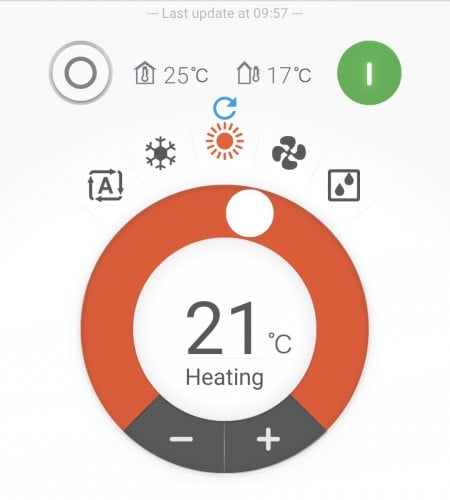I recently got a small Daikin Cora FTXM25UVMZ highwall heat pump for my office, which is about 4x2m with standard ceiling heights. It's mounted high up at one end of the office, pointed down the office. It has a thermostat inside it, and I have a temperature sensor on my desk.
Overall it works quite well, but it overheats the room. The screenshot below from the Daikin app is showing:
- The heat pump is set to 21 degrees on heating
- The inside temperature is 25 degrees
- The outside temperature is 17 degrees
- The temperature at my desk is 24.2 degrees
Even though the heat pump knows it's 25 degrees inside, the unit is on and actively heating. Once I turned it down to 20 degrees it turned off. If I set it to 23 degrees, which is about what I like, it reaches about 25 - 26 degrees.
The differential changes. If I set it to 20 degrees first thing in the morning the office will be heated to about 21 / 22 degrees. I can't just subtract say 3 degrees (set it to 20 degrees for target of 23 degrees) and set it to that temperature.
Does anyone know any way to have the Daikin heat to its setpoint then stop? I could do something in Home Assistant to tweak things, but I'd prefer not to. I could also call the installer, my electrician, I suspect they'd say "I don't know we just install them".


